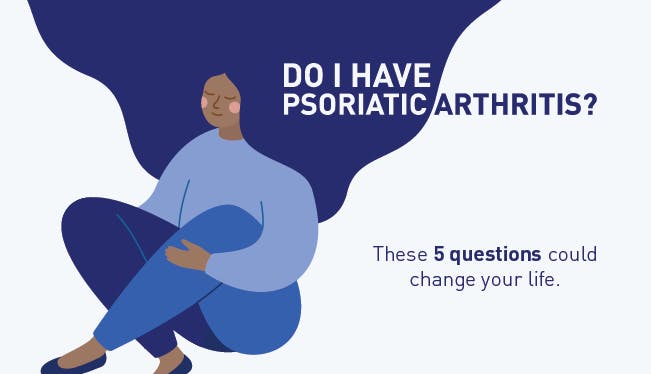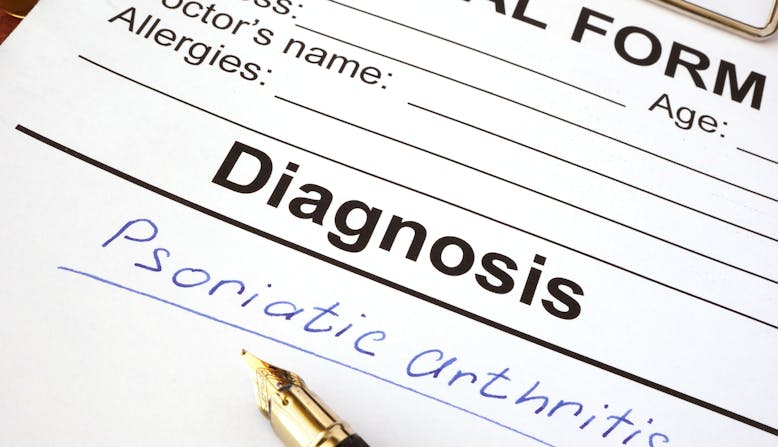Know the Signs
About 30 percent of people with psoriasis develop PsA, but the two diseases don’t necessarily follow in order. Not everyone with PsA develops psoriasis first. Some people with PsA never get psoriasis.
For people with psoriasis and/or a family history of psoriatic disease, the medical board of NPF recommends watching for the following symptoms:
- Pain, swelling, or stiffness in one or more joints
- Joints that are red or warm to the touch
- Frequent joint tenderness or stiffness
- Sausage-like swelling in one or more of the fingers or toes
- Pain in and around the feet and ankles
- Changes to the nails, such as pitting or separation from the nail bed
- Pain in the lower back, above the tailbone
If you experience one or more of these symptoms, contact your dermatologist or other health care provider. If you have psoriasis, it’s important that you get screened regularly for PsA.
PsA is typically diagnosed and treated by a rheumatologist – a doctor who specializes in the diagnosis and treatment of arthritis and other diseases of the joints, muscles, and bones.
We have some tips for how to talk with your provider.
%20(8).png?ixlib=gatsbyFP&auto=compress%2Cformat&fit=max&rect=0%2C0%2C650%2C450&w=650&h=450)


